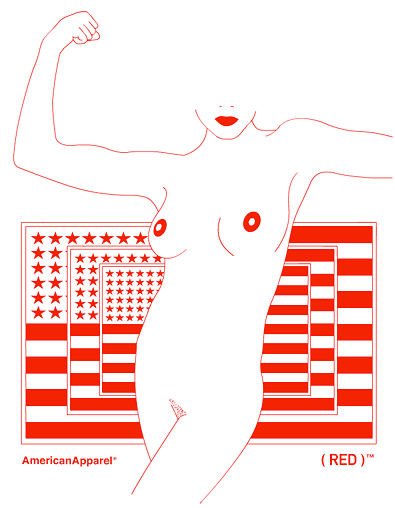visual design
When you are young, your potential is infinite. You might do anything, really.

Twenty years ago the average fashion model weighed 8% less than the average woman. Today, she weighs 23% less. (…)
Most runway models meet the Body Mass Index physical criteria for Anorexia.
photo { Ulrich Lebeuf }
Lick my legs, I’m on fire

photo { Thomas Lélu }
Rhythm-A-Ning

Carissa Kowalski Dougherty explores how album covers moved from the purely functional to graphic works of art that conveyed the tone, mood, and feel of the lyric-less jazz music contained within. Dougherty also investigates how race is designated on the covers, an item, she says, that is inextricably linked to the music itself.
During the postwar period, African-American artists and musicians were confronting the same issues in their respective fields: how to retain their identity as black Americans while being recognized as skilled artists regardless of race; how to convey their own personal experiences; how to overcome discrimination; how to succeed in their field, and how to express pride in their African heritage—all without the aid of words.
Him: My magic watch says that you don’t have any underwear on. Her: Yes I do. Him: Damn! It must be 15 minutes fast.

{ Todd McLellan }
Color: Color (Eastmancolor)
Recent studies have noted positive effects of red clothing on success in competitive sports, perhaps arising from an evolutionary predisposition to associate the color red with dominance status. Red may also enhance judgments of women’s attractiveness by men, perhaps through a similar association with fertility.
Here we extend these studies by investigating attractiveness judgments of both sexes and by contrasting attributions based on six different colors. Furthermore, by photographing targets repeatedly in different colors, we could investigate whether color effects are due to influences on raters or clothing wearers, by either withholding from raters information about clothing color or holding it constant via digital manipulation, while retaining color-associated variation in wearer’s expression and posture.
When color cues were available, we found color-attractiveness associations when males were judged by either sex, or when males judged females, but not when females judged female images.
Both red and black were associated with higher attractiveness judgments and had approximately equivalent effects.
Importantly, we also detected significant clothing color-attractiveness associations even when clothing color was obscured from raters and when color was held constant by digital manipulation.
These results suggest that clothing color has a psychological influence on wearers at least as much as on raters, and that this ultimately influences attractiveness judgments by others.
My God! Let me get a look at you. You know, you look like shit. What’s your secret?
From time to time, you will see news of a lobster being caught with some unusual color, like orange, blue, or calico. (…) What determines color in crustaceans generally? It’s a complicated mix.
The most dramatic color variants are caused by genetics. (…)
Bowman investigated this in crayfish decades ago by placing crayfish in normal tanks, tanks painted black, and tanks painted white. Crayfish placed in black tanks had more red coloration, and those in the white tanks, more white coloration. Bowman also noted that animals that had become adapted to the bright white tanks did not darken up again after being placed into black surroundings. There are limits to how flexible the color changes are.
It is with trepidation and, I hope, with due humility that I disagree with Jimmy Choo
1. High heels can lead to heel and ankle pain. (…)
2. High heels alter the electrical activity in your lower back muscles. (…)
3. High heels can shorten your muscle fibers and thicken your tendons. Last year, scientists in Austria reported on their findings on women who, perhaps counter-intuitively, feel pain when walking flat-footed. These women were habitual heel-wearers, and ultrasounds revealed their calf muscle fibers to be 13% shorter than those of women who wear flat shoes. (…)
4. High heels can lead to joint degeneration and osteoarthritis of the knee. (…)
5. High heels can lead to calluses, bunions, and hammertoes.
‘I’m not for violence, I’m for the redistribution of the violence we already have.’ –Malcolm Harris
According to my teacher, drivers with red cars had to pay higher insurance rates. Apparently this was due to the fact that people in red cars were more likely to speed. I’ve since learned that the relationship between red and speeding is actually a pervasive urban legend. Nevertheless, it piqued my interest in the association between color and behavior. Though red might not be associated with speeding, it has been found to relate to a variety of psychological processes and outcomes in both humans and non-human primates including dominance, competitive sports outcomes, achievement, and sexual attraction.
There is a large body of animal research showing that red coloration is related to testosterone levels and by extension to dominance and aggressive behavior. (…) One experimenter wore a red shirt, and the other wore either a green or blue shirt. Across conditions the monkeys disproportionately stole from the experimenter NOT wearing red – even if the “red” experimenter was female.
















